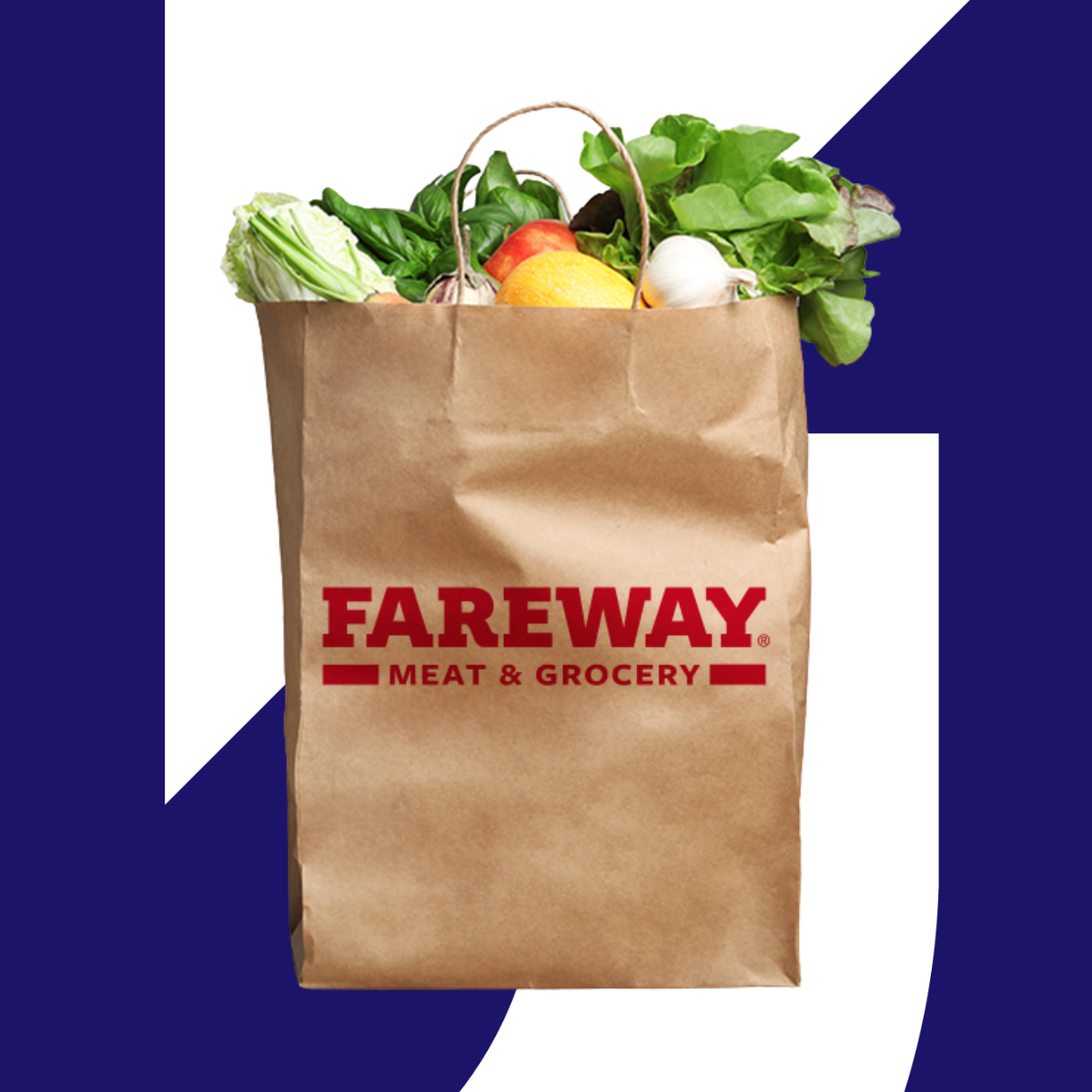What is the best marketing strategy for restaurants?

The Upside Team
Restaurant marketing has opened up incredible opportunities in recent years. Your customers are making dining decisions on their phones while they're out and about, actively looking for value and reasons to choose your restaurant over the competition. They're comparing options in real time, and they want to feel like they're getting the right value for their money.
The most successful marketing strategies focus on measurable results. The restaurants seeing the strongest growth aren't just building loyalty programs or running social media campaigns — they're also using data-driven approaches that prove exactly which marketing efforts bring in profitable customers.
The best restaurant marketing strategy combines proven customer acquisition tactics with smart retention methods, all built around measurement systems that show you exactly what's working. We'll explore these approaches and show you how to build a marketing system that delivers results you can track and scale.

Start by understanding your growth opportunity
Every restaurant has untapped potential waiting to be unlocked through smart marketing decisions.
Identify where you can capture more business
Look at your current capacity during different service periods. Most restaurants have room for growth — even successful ones rarely operate at 100% capacity during all hours. Those empty seats after lunch, slower weeknight dinners, or off-peak periods represent immediate revenue opportunities that the right marketing approach can help fill.
Consider whether your biggest opportunity lies with attracting first-time customers or encouraging existing customers to visit more frequently. Both create value, but understanding which represents the larger opportunity helps you focus your marketing investments where they'll have the most impact.
Your local competitive environment also shapes your strategy. When customers in your area are deciding where to eat, what influences their choice? Are they primarily driven by convenience, price, menu variety, or atmosphere? Understanding these decision factors helps you position your restaurant more effectively.
Get clear on your most valuable customers
Your best customers provide the blueprint for profitable growth. Think about who they are, when they visit, and what draws them to your restaurant over alternatives. Some customers might see you as their regular lunch spot, while others consider you perfect for special occasions or family dinners.
Understanding why customers choose your restaurant helps you communicate those advantages to similar potential customers. Maybe they value your consistent service, appreciate your menu options, or enjoy the atmosphere you've created. Once you know what sets you apart, you can highlight those strengths in your marketing efforts.
Pay attention to how and when your customers make dining decisions. Some plan ahead, while others decide where to eat just an hour or two before arriving. Knowing when your customers make these choices helps you reach them through the right channels at the right moments.
Build marketing around measurable customer acquisition
The most effective restaurant marketing ideas focus on acquisition that you can track, measure, and scale based on proven results.
Calculate what customers are worth to your business
Start by understanding the lifetime value of different customer segments. A customer who spends $25 on their first visit but returns monthly for a year creates $300 in total revenue, making it worthwhile to invest more in acquiring them initially. This perspective helps you determine how much you can afford to spend on marketing to different types of customers.
Look beyond just the first visit when evaluating marketing effectiveness. The goal isn't just to fill seats once — it's to attract customers who will return and become regular parts of your business. This long-term view helps you make smarter decisions about which acquisition channels deserve more investment.
Track which marketing activities bring in customers with the highest lifetime value, not just the most customers. Some marketing approaches might attract many one-time visitors, while others bring in fewer people who become loyal regulars. Focus your efforts on tactics that attract the customers who will be most valuable over time.
Create offers that drive incremental business
Design promotions that encourage new behavior rather than simply rewarding existing patterns. The most effective offers motivate first-time customers to try your restaurant or inspire infrequent visitors to come back more often. These promotions create new revenue that you wouldn't have earned otherwise.
Personalized promotions have an advantage over one-size-fits-all discounts, in part because different customers need different incentives to change their behavior. A new customer might need a larger offer to try your restaurant for the first time, while someone who visited once six months ago might return with a smaller incentive.
Focus on promotions that protect your profit margins while influencing customer decisions. The most successful restaurants use offers that are sized to motivate behavior change without unnecessarily reducing profit on sales they would have made anyway. This approach lets you grow revenue while maintaining healthy economics.
Measure which marketing actually brings in new customers
Track the source of new customers by asking how they heard about your restaurant. This information helps you identify which marketing channels consistently deliver new business at a reasonable cost. Simple tracking methods can provide valuable insights about where to focus your marketing investment.
Compare the performance of different marketing activities by looking at the total value they generate, not just immediate sales. If a restaurant marketing plan brings in 20 new customers who each spend $30 initially, you've generated $600 in immediate revenue plus the potential for future visits from those customers.
Look for marketing channels that generate positive returns by comparing their cost to the revenue they produce. The most effective acquisition methods pay for themselves through the business they generate, giving you confidence to increase investment in successful approaches.
Enhance customer retention and loyalty
Strong retention strategies complement your acquisition efforts by maximizing the value of customers you've already attracted.
Build on your existing loyalty program
Many restaurants already have some form of loyalty program, and these programs create real value for businesses. Loyalty program members typically visit more frequently and spend more per visit than non-members. The opportunity lies in making these programs even more effective through additional layers of customer engagement.
Consider how you can enhance your existing loyalty program rather than replacing it. Additional incentives that work alongside your current program can boost participation and increase the frequency of visits from your most valuable customers. This layered approach builds on investments you've already made while creating additional value.
Track how different customer segments respond to loyalty initiatives. Some customers might be motivated primarily by points or discounts, while others value exclusive access or special recognition. Understanding these preferences helps you design retention strategies that resonate with different types of customers.
Use customer data to create personal experiences
The customer data you already collect through transactions and loyalty programs can power more personalized marketing approaches. Instead of sending the same offer to everyone, you can create targeted promotions based on individual customer behavior and preferences.
Personalization doesn't always require complex technology. Simple approaches like recognizing regular customers' preferences or acknowledging special occasions create meaningful connections that encourage return visits. These personal touches often have significant impact on customer loyalty and visit frequency.
Focus on personalization that drives measurable increases in visit frequency or spending. Some personal touches might make customers feel good without changing their behavior, while others create lasting increases in how often they visit or how much they spend. Prioritize approaches that create quantifiable improvements in customer value.
Track what drives return visits
Monitor which retention strategies create sustained increases in customer visit frequency. Some promotions might bring customers back once without changing their long-term habits, while others establish new patterns that persist over time. Focus your retention efforts on approaches that create lasting behavior change.
Pay attention to the timing of return visits after different types of customer outreach. If customers typically return within two weeks of receiving a particular type of offer, that information helps you optimize the timing and frequency of your retention marketing.
Measure the incremental impact of your retention efforts by comparing customer behavior before and after implementing new strategies. The most effective retention programs don't just maintain existing visit patterns — they measurably increase how often customers choose your restaurant.
Create a comprehensive marketing approach
The most successful restaurants use complementary marketing tactics that reinforce each other and reach customers at different points in their decision-making process.
Layer acquisition and retention strategies
Different marketing approaches serve different purposes, and they work best when they support each other. Customer acquisition efforts bring in new diners, while retention programs encourage them to return more frequently. Measurement systems help you understand which tactics are working and deserve more investment.
Design marketing campaigns that can serve both acquisition and retention goals. An offer that attracts new customers can also motivate existing customers to visit more frequently, maximizing the impact of your marketing investment.
Create consistent experiences across all your marketing touchpoints so customers receive reinforcing messages about what makes your restaurant special. Whether someone discovers you through a search, a promotion, or a friend's recommendation, their experience should consistently reflect your restaurant's key strengths.
Focus on measurement and optimization
Track metrics that directly relate to your business goals rather than general marketing metrics. While brand awareness and social media engagement have some value, focus primarily on measures that show real business impact. Modern restaurant marketing software makes it easier to collect and analyze this data, providing the insights you need to make informed decisions about your marketing investments.
The metrics that matter most for restaurant marketing:
- New customer acquisition rates and costs
- Repeat visit frequency and timing patterns
- Customer lifetime value by acquisition channel
- Incremental revenue generated by specific marketing activities
- Return on investment for different promotional strategies
Test different approaches on a small scale before implementing them broadly. Try variations in offer amounts, timing, messaging, or targeting to see what works best for your specific customers and market. Small improvements in response rates can significantly impact your marketing performance.
Adapt based on your specific situation
Your marketing strategy should reflect your restaurant's unique position, customer base, and local market conditions. Approaches that work well for restaurants in other markets might need modification for your specific situation.
Stay flexible and refine your marketing tactics based on actual customer response and business results. What matters most is not following a predetermined playbook, but finding the combination of strategies that consistently delivers profitable growth for your specific restaurant.
Continue measuring and improving your marketing efforts over time. Customer preferences change, new competitors enter the market, and economic conditions shift. The most successful restaurants adapt their marketing strategies based on these changes while maintaining focus on measurable results.
Who we are
Upside is a digital marketplace that connects restaurants with nearby customers through personalized cash back offers. Our platform reaches over 35 million consumers when they're deciding where to dine, fill up, or buy groceries, presenting them with personalized promotions that work within your profit margins. These offers are strong enough to influence customer behavior, driving new diners to your restaurant while protecting your bottom line.
We partner with tens of thousands of restaurants — from enterprise chains to independent establishments. Our marketplace model means that as more restaurants — and more stores in other categories — join and more customers earn cash back, everyone benefits. Restaurants earn incremental profit, customers get more value out of their daily fuel and food shopping, and communities see more local business activity.
The restaurants seeing the strongest growth use Upside to complement their existing marketing efforts, not replace them. We work alongside your loyalty programs, social media campaigns, and other initiatives to layer additional value that drives measurable results you can track and scale.
Frequently asked questions
How do I know if my marketing is actually working?
Focus on metrics that directly impact your business results rather than vanity metrics. Track new customer acquisition, repeat visit frequency, and incremental revenue generated by specific marketing activities. Ask new customers how they heard about you, and compare the lifetime value of customers from different acquisition channels. The most effective marketing pays for itself through the business it generates.
What's the difference between incremental revenue and total revenue?
Incremental revenue represents new business you wouldn't have earned without a specific marketing effort. If a customer would have visited your restaurant anyway, that's not incremental revenue you can attribute to a promotion. True incremental revenue comes from attracting first-time customers, encouraging infrequent visitors to return sooner, or motivating existing customers to visit more often than they normally would.
Should I replace my existing loyalty program with something new?
Most restaurants see better results by enhancing their existing loyalty programs rather than replacing them entirely. Your current program already has value and member participation. Consider adding complementary strategies that work alongside your existing program to increase participation rates and visit frequency from your most valuable customers.
Share this article:
The Upside team is made up of data scientists and industry experts who are passionate about delivering empowering content to our readers. With a focus on providing practical insights and meaningful perspectives, we create engaging materials across a wide range of topics. From exploring industry trends and offering expert analysis to sharing useful tips and inspiring ideas, our team works diligently to provide you with the information you need to thrive.
Request a demo
Request a demo of our platform with no obligation. Our team of industry experts will reach out to learn more about your unique business needs.









.png)





